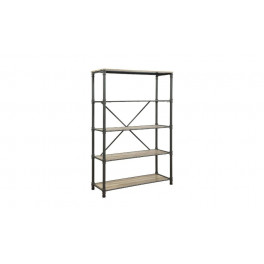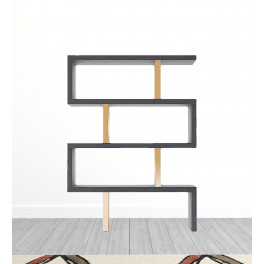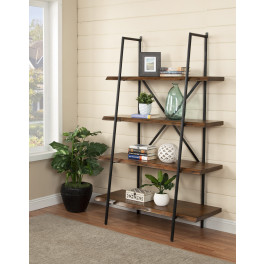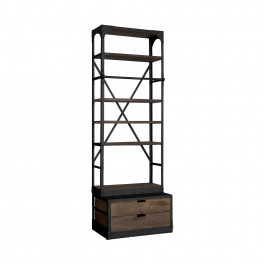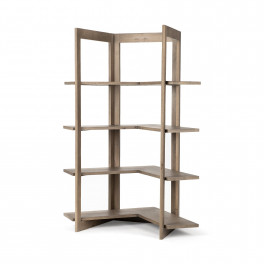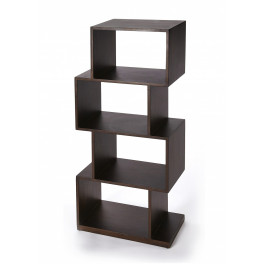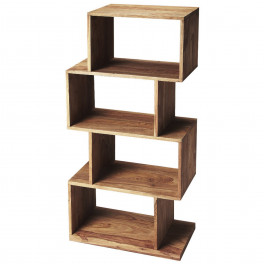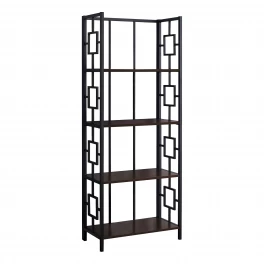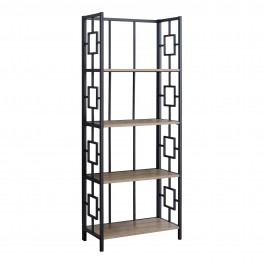Most particle board furniture, like the kind you may find at IKEA, is often basic and neutral. While this makes it easy to assemble (usually), its appearance can get boring after a while. However, a little bit of paint can go a long way in livening up your furniture and transforming your room. Decide on a theme – I decided to bring home a little bit of the Mediterranean – and follow these steps to magically turn your old cabinets into entirely new furniture.
Prepare Your Materials
Preparation is necessary for any project, especially this because it could get difficult and messy if not properly prepared. First, think of where this piece of furniture will be placed after it’s painted. Once you have the area in mind, decide on what colors you want to add to that particular room. Make sure your colors complement the preexisting shades in that space. Once you’re absolutely sure of the colors, head to your preferred home improvement store to buy your materials:
- Sandpaper: 10-20 sheets
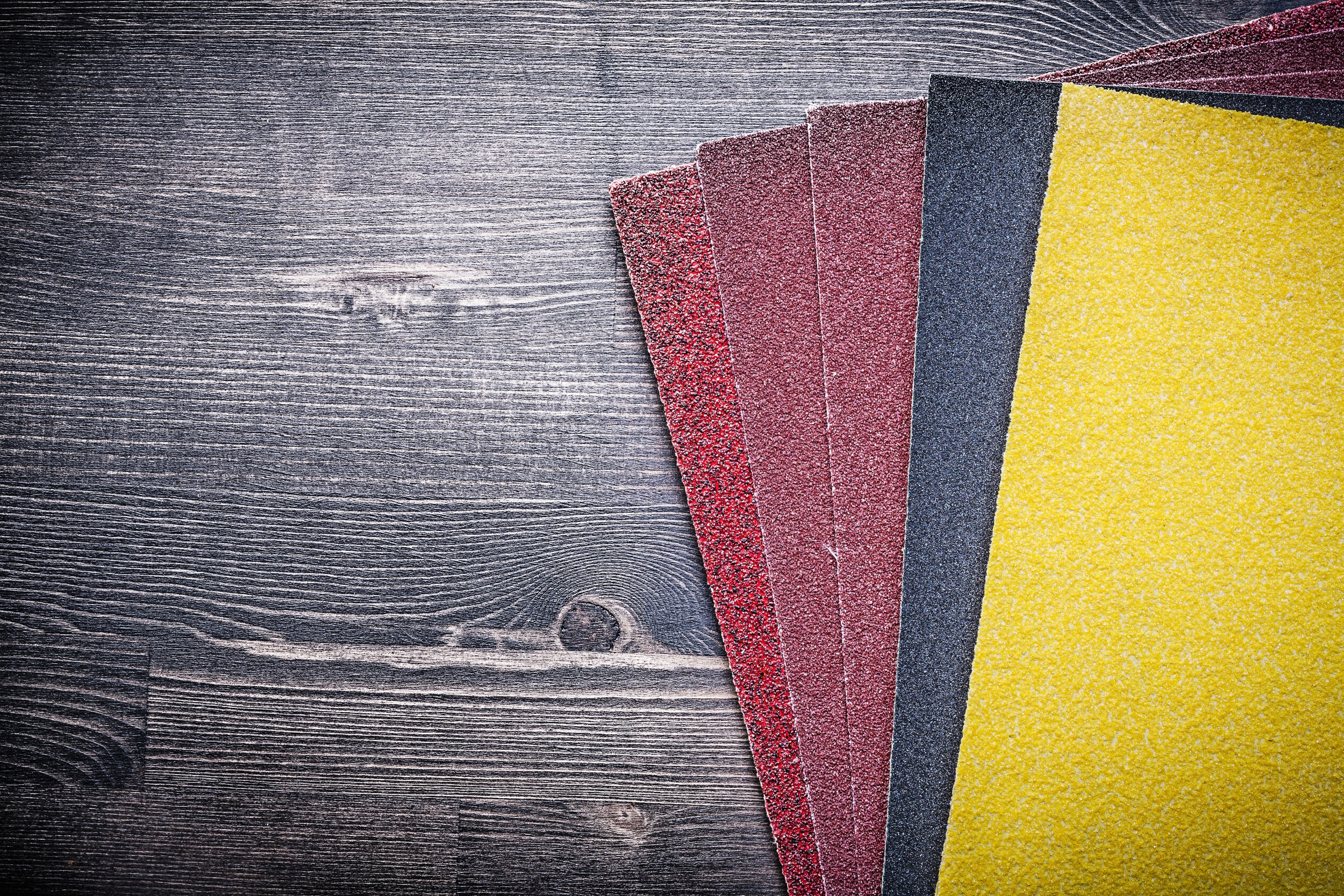
Photo by mihalec on Shutterstock
- Dust Wipes: 3
- Duct Tape: 1 roll

Photo by BearFotos on Shutterstock
- Sponge Roller: 1
- Spare Sponges: 2

Photo by BearFotos on Shutterstock
- Primer & Paint: Varies by Project
- Paint Brushes: 2
For safety and convenience, I suggest you use gloves to prevent bruises or scratches while sanding and stains while painting — preferably the disposable vinyl exam gloves from a pharmacy so you can change them between sanding and painting. I also recommend getting a facemask to avoid breathing in particles while sanding. Spreading out a wide plastic sheet or old newspapers — like I did — will help protect your floor from damage and dust.
Sand Your Furniture
Sanding is the process of smoothing the furniture. Sanding is the most boring and time-consuming part of the process, but if done well, it’s also the most rewarding. If you live in a spacious place with a garage, yard, or patio, I suggest you do your sanding there. But if you’re an apartment dweller, I suggest you cover everything, except your project materials, with an old sheet because sanding furniture creates a fine dust that settles on everything. If you want to disassemble any part of the furniture (such as drawers), now’s the time.
Before you use the sandpaper, stick duct tape on the back. It keeps the sandpaper from tearing. Also, wear gloves. Since we’re repainting particle board furniture, we need to sand the furniture until it’s reduced to its original color. While most wooden furniture needs to be sanded until you hit the color of raw wood, it’s important to be a little careful and gentler with particle board furniture. Sand until you’re able to rub off most of the color. Don’t over-sand because there’s a possibility it could chip the surface. Since there’s going to be a lot of dust, keep a cloth wipe handy.
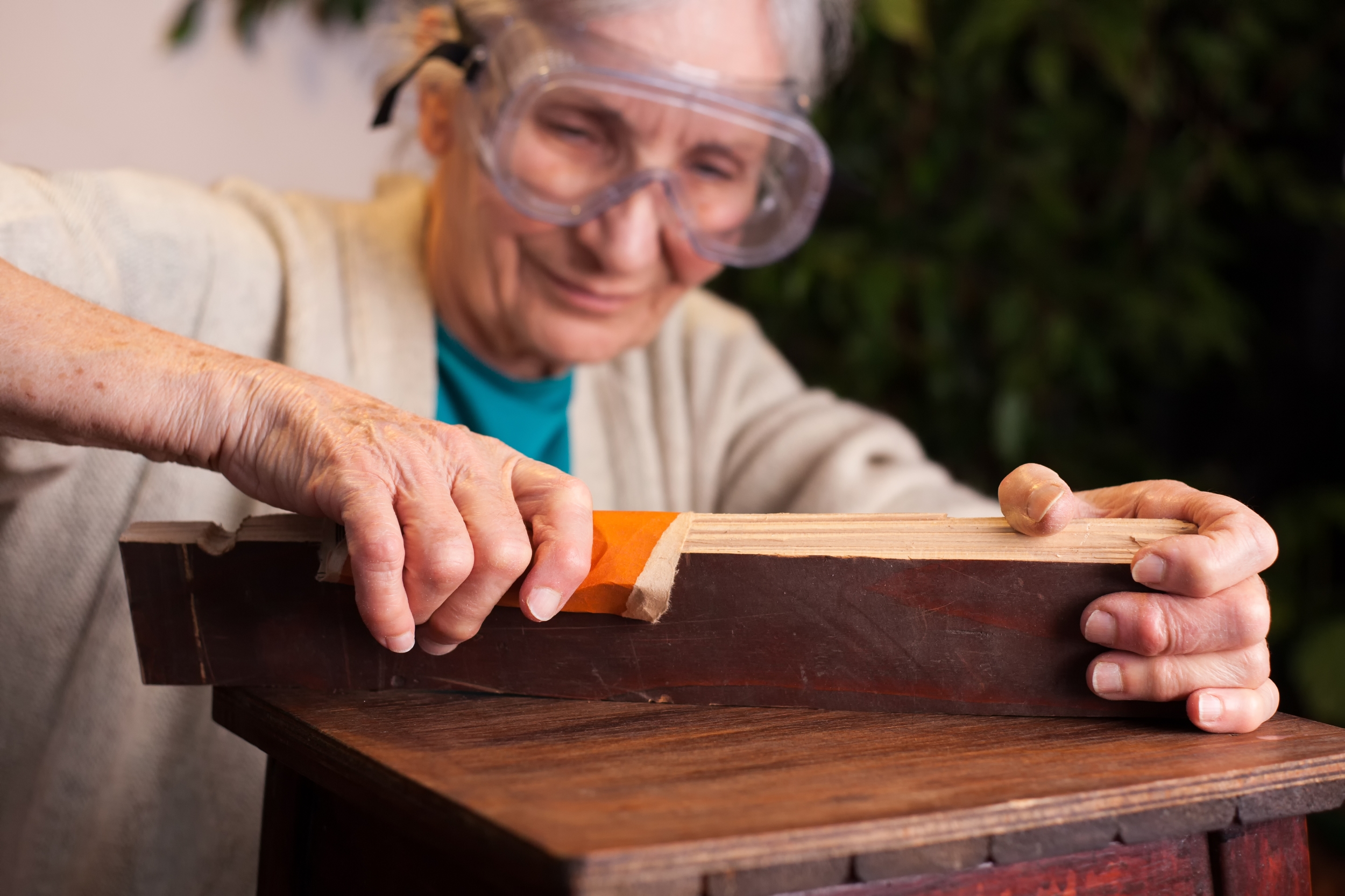
Photo by aerogondo2 on Shutterstock
Prime & Paint
Wipe the sanded furniture thoroughly with a slightly-damp cloth. Once the furniture is free of moisture, take out your paints. Get a quart of the color you’re using most (it covers about a 100 square feet) and a sample size of the other colors. While most people prime and paint separately, it’s best to buy a prime-and-paint. Begin with painting the insides and crevices of the largest piece. That way, you’ll give it more time to dry.
Then, use a roller to paint the first coat on all the broad surfaces. While you let the first coat of paint dry, paint the smaller disassembled parts. Remember to change your rollers and wash your paint brushes in between the different colors you’re using. Get back to painting a second coat once the painted furniture is dry. If you messed up and want to change the paint color, just sand that bit again and paint over it. If you want to paint a darker color over a light one, you can do so without sanding. Let all the furniture completely dry before you reassemble and use it again.
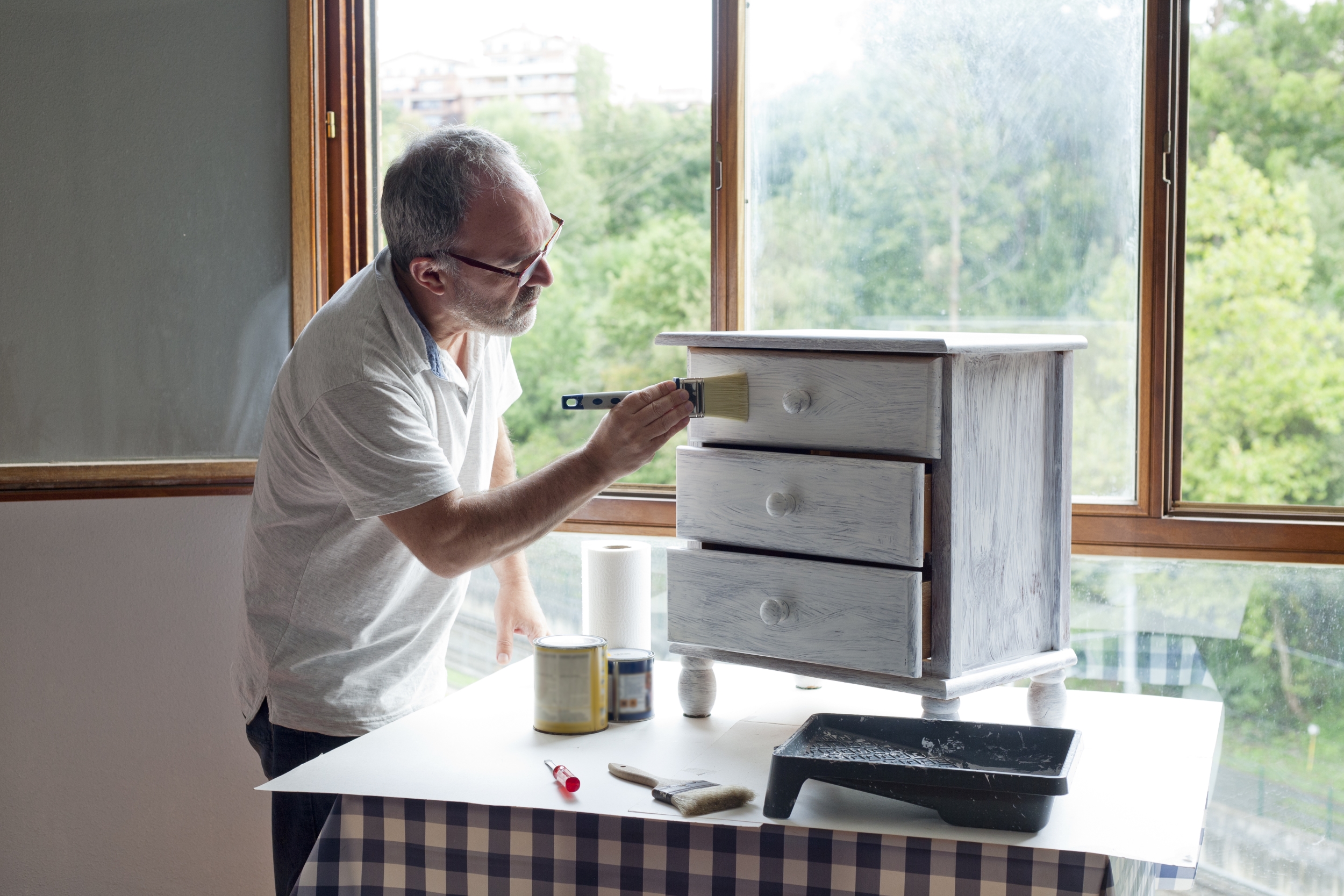
Photo by alfernec on Shutterstock
With three simple steps, not only have you repainted your furniture, but transformed the focal point of an entire room.




